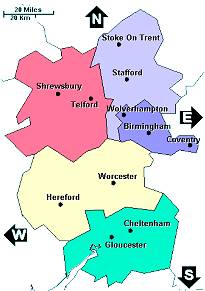| Pollutant |
Major sources |
Effect |
NUTRIENTS
especially nitrogen (N) phosphorus (P) organic
matter (organic carbon) (C)
|
Stormwater drainage Fertilisers from parks and gardens Sewage
Agricultural runoff containing fertilisers and animal wastes Phosphate
detergents Leachates from rubbish tips and septic tanks Organic
industrial wastes Estuary sediment banks |
High nutrient levels cause excessive growth of algae, disturbing
ecological balance in estuary and reducing recreation values Lowered
oxygen levels in bottom waters leading to fish kills |
TOXINS
poisons including pesticides, petroleum, heavy metals,
acids, ammonia, cyanides and phenols, solvents, oil and detergent
|
Pesticides and herbicides in runoff from urban areas, agriculture,
horticulture and forestry Spills or industrial waste discharges
of petroleum products or toxic chemicals Anti-fouling paint from
boats Leachates from tip sites Some species of microscopic algae
introduced in ballast water from ships from other parts of the world
|
Poisoning of plants and animals causing defects, illness or death
Sometimes toxins accumulate in the food chain Oil and detergents
kill wildlife |
PATHOGENS
bacteria and viruses |
Sewage and septic tank effluent Animals
wastes Organic wastes from industry (e.g. food processing) Runoff
from stock holding areas |
Disease in plants or animals, including
people |
PHYSICAL POLLUTANTS
litter, sediment, salt, debris, plastic, heated
wastewater |
Rubbish and litter dumped or blown into waterways Sediments from
erosion of foreshores, catchment soil loss, dredging, mining, building
and road construction Suspended solids and saline discharge in industrial
wastes Heated wastewater discharge from industry |
Plastic entangles or suffocates wildlife Sediments reduce water
quality, smother bottom-dwelling plants and animals and reduce light
penetration Litter causes visual pollution |
